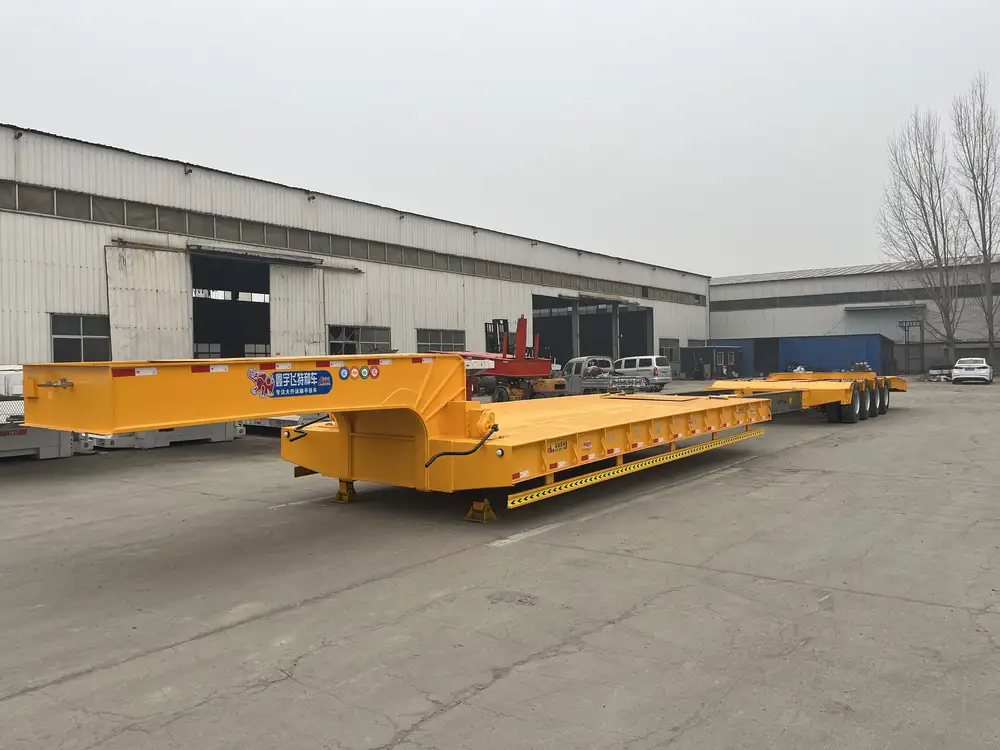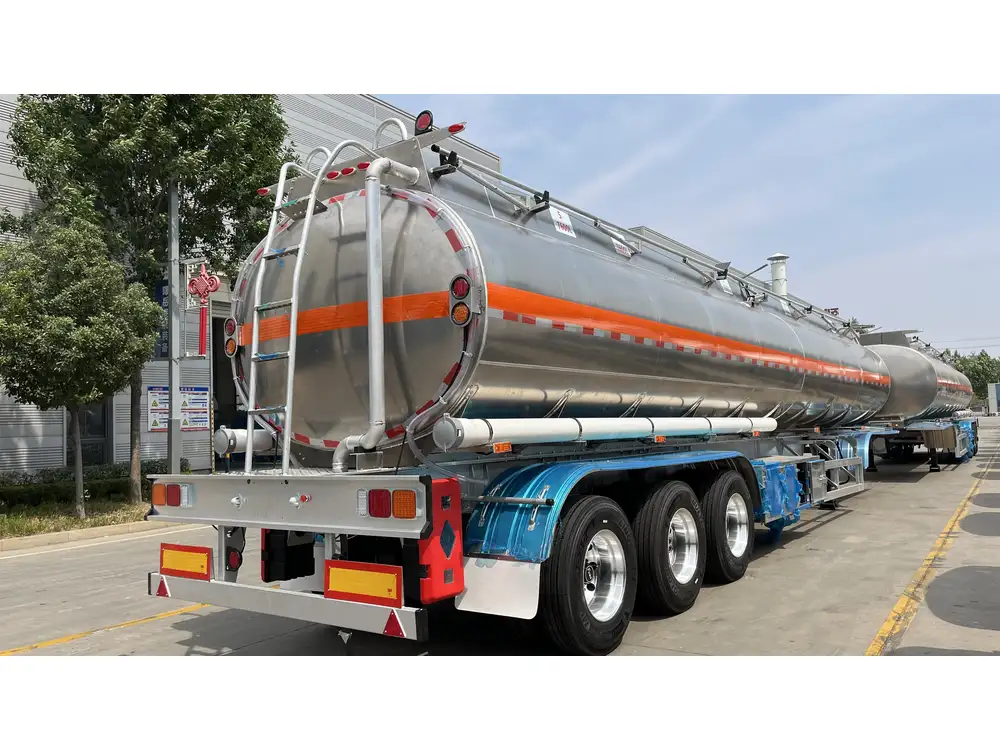Introduction to Semi-Trailers
In the vast landscape of transportation and logistics, semi-trailers play a pivotal role, essential for the movement of goods across various terrains and distances. These specialized trailers, designed to be towed by trucks, have revolutionized the freight industry, offering an efficient and versatile solution for transporting cargo. But what precisely defines a semi-trailer? This article will delve into the anatomy, types, advantages, and considerations of semi-trailers, offering insights that can enhance your understanding and decision-making when engaging with this critical component of freight transport.
The Anatomy of a Semi-Trailer
To grasp the functionality of a semi-trailer, we must dissect its design and components. A semi-trailer is characterized by two main components: the trailer itself and the fifth wheel coupling system used to connect it to its towing vehicle (usually a tractor or truck). Let’s explore the principal parts of a semi-trailer:
| Component | Description |
|---|---|
| Frame | The structural skeleton that supports the load, typically made from high-strength steel. |
| Axles | Essential for weight distribution, most semi-trailers have two or more axles to support heavy loads. |
| Wheels and Tires | Adapted for specific loads; tires are crucial for road safety and cargo stability. |
| Loading Platform | The flatbed or enclosed space where cargo is secured, ranging from open platforms to fully enclosed boxes. |
| Suspension System | Provides stability and ride comfort; critical in dampening road shocks when transporting goods. |
| Braking System | Comprising air brakes or hydraulic brakes, essential for controlling the trailer’s speed and stability during transportation. |
| Kingpin | The pivotal connector that links the trailer to the tractor; pivotal for maneuverability. |

The Fifth Wheel Coupling System
A distinguishing feature of semi-trailer construction is the fifth wheel coupling. Unlike traditional trailers that connect via a hitch, semi-trailers utilize a fifth wheel plate mounted on the tractor unit, allowing for greater weight distribution, maneuverability, and efficient cargo handling. This design fundamentally differentiates semi-trailers from other trailer types.
Types of Semi-Trailers
Diverse cargo requires tailored solutions. Below is a comprehensive list of the various types of semi-trailers, each engineered to meet specific transportation needs:
| Type | Description |
|---|---|
| Flatbed Trailers | Unfenced trailers ideal for carrying large and heavy loads, perfect for construction materials and machinery. |
| Dry Van Trailers | Enclosed trailers that protect cargo from the elements; widely used for shipping consumer goods. |
| Reefer Trailers | Refrigerated trailers essential for transporting perishable goods, like food and pharmaceuticals. |
| Tank Trailers | Specifically designed for transporting liquids, these trailers are often used for chemicals and fuels. |
| Lowboy Trailers | Low-profile trailers used to transport heavy equipment that requires lower ground clearance. |
| Container Trailers | Designed to carry intermodal containers, facilitating easy transfer between ships, trucks, and trains. |
Noteworthy Variations
Each type of semi-trailer can be further customized, including features that enhance safety, loading efficiency, and operational capacity. For instance, a flatbed trailer’s load can be secured with specialized tie-downs, while reefer trailers come equipped with advanced temperature control systems.

Advantages of Using Semi-Trailers
When considering the adoption of semi-trailers, various benefits become apparent:
1. Versatility
Semi-trailers can accommodate a broad spectrum of cargo types, making them suitable for numerous industries, including construction, agriculture, and retail.
2. Increased Capacity
The design allows for a significant hauling capacity, often greater than non-semi trailers. This increase can effectively reduce transportation costs per unit of cargo.

3. Enhanced Stability
The innovative coupling and weight distribution mechanism provide superior stability, especially during sharp turns or on uneven terrains, mitigating the risk of accidents.
4. Modular Design
The semi-trailer system allows for seamless interchangeability between different types of trailers and tractors, enabling businesses to adapt quickly to changing logistical needs.
5. Improved Load Management
The flatbed design and access points offer better loading and unloading options, essential for businesses that rely on rapid turnover times.

Considerations When Choosing a Semi-Trailer
While semi-trailers offer numerous advantages, there are critical considerations that potential buyers should evaluate to ensure they meet their operational requirements:
1. Legal Weight Limits
Each jurisdiction has strict regulations regarding the weight and dimensions of vehicles on public roads. It is crucial to remain compliant to avoid legal penalties and ensure road safety.
2. Terrain Compatibility
Depending on geography, businesses may require specialized semi-trailer types that can withstand specific conditions, such as off-road capabilities or heightened durability for rugged environments.

3. Load Type
Understanding the nature of the cargo to be transported is vital. Flammable or hazardous materials, for instance, necessitate particular tank trailers designed to meet safety standards.
4. Cost vs. Investment
While upfront costs are a factor, potential buyers must also consider the long-term investment in durability, maintenance, and operational efficiency of the semi-trailer.
Maintenance and Longevity of Semi-Trailers
Maintenance is the linchpin of operational efficiency and longevity for semi-trailers. Regular checks and adherence to a defined maintenance schedule can significantly reduce operational downtime and enhance safety.

Key Maintenance Practices
- Regular Inspections: Conducting pre- and post-trip inspections to check brakes, lights, and tires.
- Lubrication: Keeping moving parts well-lubricated to prevent wear and tear.
- Tire Care: Maintaining proper tire pressure and rotation to ensure safety and fuel efficiency.
- Cleaning: Regularly cleaning the trailer to prevent corrosion and damage from road debris or chemicals.
Lifespan Expectations
The lifespan of a semi-trailer generally ranges between 10 to 15 years, depending on usage, maintenance, and environmental factors. Choosing high-quality materials and employing rigorous maintenance schedules can drastically extend this time frame.
The Future of Semi-Trailers
As technology progresses, the semi-trailer industry is evolving, integrating innovations like telematics, autonomous driving technologies, and enhanced materials for improved fuel efficiency and safety. Such advancements not only promise to increase operational effectiveness but also facilitate greener and more sustainable logistics practices.

Technological Integration
- Telematics: Utilization of real-time tracking systems that assist in route optimization and asset management.
- Autonomous Trucks: Although still in nascent stages, the move towards autonomous tractors combined with semi-trailers could redefine long-haul logistics.
- Sustainability Efforts: Introduction of lighter materials results in better fuel efficiency, contributing to a greener transportation ecosystem.
Conclusion
In the multifaceted realm of logistics, understanding “what is a semi-trailer” transcends mere definition. It encompasses a comprehensive exploration of their design, advantages, types, maintenance, and impending innovations. Armed with this knowledge, businesses can make informed decisions to integrate semi-trailers into their operations effectively. Whether facilitating the transportation of critical supplies or enhancing manufacturing efficiency, semi-trailers remain integral to the modern supply chain’s success. Embracing this pivotal transportation solution paves the way for streamlined operations, cost savings, and enhanced logistical efficiencies.



